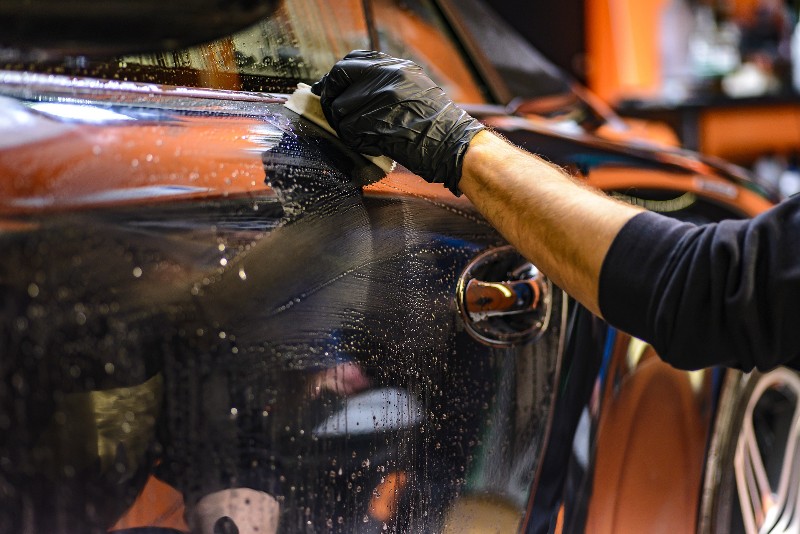Cats are such cute and adorable creatures. Just ask any cat lover about how adorable cats are, and chances are they’ll have so many things to say. Anyone that has ever owned a cat will know that they have a need to scratch. If you have a car, you may wonder whether your car may be the latest victim of your cat’s scratching habit. Well, wonder no more as we’ll answer the question in this article.
Cats have a natural instinct to scratch things and can leave scratch marks on cars. However, cars aren’t attractive scratching objects to cats, and they’ll instead scratch softer items like furniture, drapes, bed, and carpets.
You can’t stop cats from scratching. The only thing you can do is to train them on what to and what not to scratch. Using scratching posts and pads can make your cats spare other items as they focus on the posts and pads. Below, you’ll learn more about cats’ scratching habits and the level of risk your precious automobile is potentially facing.
Cats Have A Need To Scratch
It’s as we mentioned earlier. Cats have a need to scratch things. The reason why cats scratch things are discussed below:
Exercise
Yep, you read that right. Just like you run, jog, or do other workouts, cats have their own thing. And part of that involves scratching, which is a great exercise for them. Scratching allows cats to stretch out their paws, legs, and backs. It’s a great workout for them. Your furry companion gotta stay in shape, right?
To Sharpen Their Claws
Cats’ claws become dull over time. To sharpen their claws, cats will scratch various objects. Scratching removes the outermost layer of a cat’s law to reveal the sharper layers below. Apparently, claws are big deals to cats, and they’ll scratch things occasionally to keep them sharp.
Territory
Cats like to mark their territory. And one of the ways they do this is to scratch things in their home. It’s important for cats to mark their territory as it makes them feel happy and safe.
Instinct
Cats have a strong instinct to scratch things. Seeing a smooth surface can trigger this instinct and make a cat scratch objects for no reason. There’s nothing you can do about it since the instinct is hardwired into cats. It comes with the package of having them as companions.
What Do Cats Like To Scratch?
Generally, cats like to scratch soft objects. Scratching a soft layer will shed old layers from the cat’s paws without damaging their claws. Hard surfaces like metal or granite are more likely to damage the claws. Also, cats like a solid grip, and it’s easier for them to sink their claws into soft objects than hard ones.
Most times, cats will scratch furniture, carpets, beds, and drapes. Your furniture is the most likely victim, especially pieces that are tall and sturdy.
Can Cats Leave Scratch Marks On Cars?
While cats will naturally prefer to scratch furniture, carpets, drapes, and other items in your home, they can also scratch your cars. Some cat owners have seen their cats jumping on their cats and sliding down the sides, and trying to hold on with their claws. But cats do not generally find cars appealing, so chances are your furry friend will find other stuff to scratch.
How To Remove Scratches From Cars?
Scratches are unsightly on cars and ruin the aesthetics. Literally, nobody wants to find scratches on their cars. But should you find scratches on your car, you’ll have to remove them if you want your car back to its former glory.
Poor parking, vandalism, poor driving skills, and accidents are some of the things that can cause scratches on a car. Drivers typically dread scratches, as going to the auto shop to remove little scratches can be expensive.
Depending on how deep the scratches are, you can remove them yourself with the right instructions and inexpensive materials. Below, we’ll describe different ways to remove scratches from cars.

The Toothpaste Method
Toothpaste can do a lot more than wash your teeth. If the scratches on your car aren’t deep, you can use toothpaste to remove them. A way to know if scratches are deep or not is to use your fingers for scratching them. If your nails catch the scratches, they are deep, and you’ll need to use a professional scratch removal product.
Clean the affected area to remove debris and dirt before you apply toothpaste. Dry the affected area with a clean cloth after cleaning it. Now, get a microfiber towel and apply a small amount of water to make it damp. Then apply some toothpaste to the damp towel, after which you rub the towel into the affected area. Whitening toothpaste works best, but you can use other types of toothpaste.
Apply the toothpaste thoroughly and rinse off the excess. Repeat the process up to two times to completely remove the scratches.
Using A Scratch Removal Product
Scratch removal products or kits are great for removing scratches, especially those that aren’t too deep. You can easily purchase them from any auto supply store. Note that there are different types of scratch removal products, and if you aren’t sure about which one to use, have a chat with an attendant in the auto supply store you are buying the product from.
After getting your removal kit, wash the affected area to get rid of dirt and debris. Then dry it to make it ready for the process. Apply a small amount of the scratch to a microfiber towel. Some kits come with a mechanical buffing tool you can use in place of a microfiber towel.
After applying the product to the buffing tool or towel, apply it to the affected area in a circular motion until it is well distributed. Then remove the excess product. The manufacturer of the kit will provide instructions on the best way to remove any excess. Repeat the process up to 2 or 3 times to completely remove the scratches.
Deep Scratches Require A Paint Job
If the scratches are deep, the above methods won’t work. You’ll have to do a paint job. A mechanic can do this for you, although it will be expensive. If you are a DIY person, you can attempt the paint job yourself. First, wash and dry the car thoroughly, after which you sand the affected area to remove the top layers of paint.
Rinse and dry the area. Then, apply some primer to the sanded area. The next step is to apply a few coats of paint to the area. We don’t think we need to mention that the applied paint has to match the color of your car. After applying the paint, wax the area to seal the paint.

